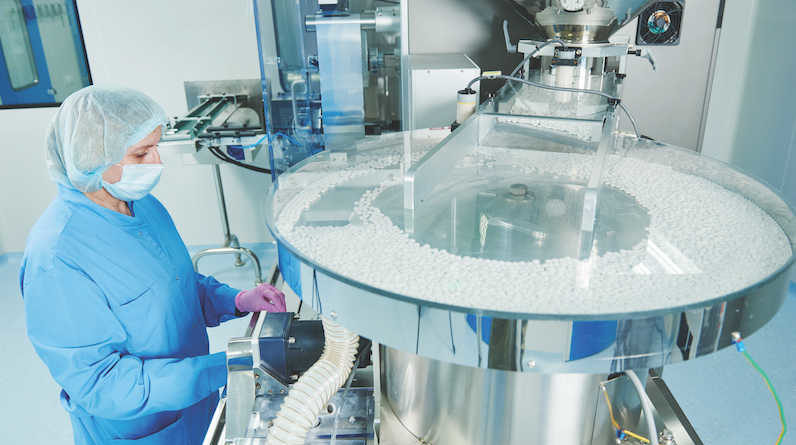
Response to European Parliament’s Resolution on medicine shortages of 17 September 2020
There are a number of reasons to be optimistic about the Resolution on medicine shortages adopted by the European Parliament on 17 September 2020(1). MEPs voted overwhelmingly in favour of supporting multiple measures that could greatly contribute to tackling medicine shortages. Looking beyond the title of the Resolution, which could have been named “Ensuring continued availability of medicines” rather than “The shortage of medicines – how to address an emerging problem”, the Resolution itself contains a number of constructive proposals. EFPIA members support their translation into action, through improvements of existing rules where necessary, and through guidance in GMP/GDP. However, other recommendations made by the European Parliament, such as changes in intellectual property rules, and pricing and procurement policies, have the potential to undermine to ability of the research-based pharmaceutical industry to innovate, denying patients access to the next generation of treatments.
An undisputed fact is the underlying impact of man on the environment.(1-AW, AX) Not reassuring in itself, this is common ground; EFPIA acknowledges, in our Pharma- ceutical Strategy’s Roadmap response, that action in this area is a non-negotiable fourth imperative, alongside medicine availability, incentives for innovation and maintaining the EU’s global leadership position.
There is a fundamental need to base decisions on facts rather than assumptions, emotions and individual interpretations. While the Resolution lists over 100 points for action, one of them is to commission an independent study to assess the actual root cause of medicines shortage.
That study will make known the facts on which recommendations for action can be based. In this sense, the call to action in the Resolution should hopefully be open to fine-tuning depending on the outcome of the study.
That the EU is currently overdependent on medicines and active pharmaceutical ingredients (APIs) from non-EU sources is a myth based on generalisation. Pharmaceutical manufacturing and supply are highly complex largely because of the great complexity of medicinal products themselves, and as advanced therapies become available, this theme of segmentation will continue. For example, in the generic sector manufacturing may depend disproportionately on non-EU sources. However, for the innovative medicines sector, an EFPIA members’ survey shows that 76% of our medicines for patients in the EU use APIs that we also make in Europe (8% China, 3.4% India). The key is to ensure that policies are evidenced-based and nuanced enough to account for the differences across the pharmaceutical sector.
The EU became a leader of pharmaceutical innovation in the past, in part due to incentives established by EU policymakers, which provided a basis for long-term investment decisions by manufacturers. This can be continued for the innovative sector and introduced now for the sectors that, conversely, were incentivized to invest elsewhere. As an example, there exists manufacturing technology that is modular, mobile, small- scale and transportable.
Given a standard set of starting materials meeting pre-defined specifications, production can take place using a process that can be replicated anywhere in the world.
This is enabled through techno- logical advancement. What then is the “manufacturing site” registered in Module 3 of the Marketing Authorisation Application? Does the current process allow the pharmaceutical regulatory framework to keep up with innovation in a way that optimizes the availability of medicines to patients?
What is the factual basis behind the “emerging problem of shortages”? or the assertion “…the problem of shortages of medicines within the EU has worsened exponentially in recent years” (1-A) (author’s italics)? The unparalleled pressure of the pandemic on global supply has exposed risks of shortage but in reality, both the innovative and generic pharmaceutical manufacturers responded successfully to surges in demand. This was possible due to well-established, continuously fine-tuned and monitored, highly orchestrated processes of forecasting, demand, production and distribution planning for replenishment. In crisis, collaboration was also a key to success. The weekly forum uniting manufacturers and marketing authorisation holders with the European Medicines Agency (EMA) / Heads of Medicines Agencies (HMA) and EU Commissioners during the first four months of the pandemic, was a welcome opportunity for dialogue, to refine existing reporting processes, and to alert EU health authorities of emerging supply constraints and act on these swiftly. Few of the shortage notifications translated into unavailability of treatment for patients, despite surges in demand of up to +300%, thanks largely to foreseen shortage being offset by availability of alternative medication and general pandemic preparedness. In the analysis of root causes of potential shortages, disruption of supply beyond the control of the pharmaceutical manufacturing and supply chain process itself, such as government-imposed movement restrictions (export bans) and national stockpiling, as well as demand variance due to unexpected unavailability of alternative treatments, are at least as significant as the unavailability of APIs or starting materials.
To this end, we welcome the call launched by the European Commission for a study on the multifactorial root causes of shortages, to provide facts on which decisions and priority actions can be based.
Other aspects of the Resolution are also encouraging. The innovator companies, through EFPIA, are keen to build on the active collaboration with EU institutions put in place during this COVID-19 crisis, which could be considered a precursor to the EMA-led pharmaceutical forum (1-18) proposed in the Resolution. Key areas for development of the intentions expressed in the Resolution into concrete measures, to be confirmed by the results of the study on root causes, and which will enable their implementation, include:
- › Regulatory Flexibility: patient access to medicines across Members States, use of e-leaflets, revision of Variations rules to facilitate the registration of alternative manufacturing sources or to facilitate innovative production technologies ;
- › Shortage prevention: harmonisation of definitions and processes. Prevention plan/ risk assessment ;
- › Parallel trade: as contributor to imbalances and shortages, and “inadmissible” business practice as high risk of abuse and entry of counterfeits ;
- › Social and environmental responsibility: coordination and incentives, coupled to the EU Green Deal, with other sectors (trade, agriculture, forestry, academia…) in the twin digital and ecological transformation ;
› Digitization: application of artificial intelligence and other opportunities (e.g. use of the European Medicines Verification System) for digitization in supply visibility.
› Strategic safety stock: (“EU Emergency Pharmacy”) where justified, and enhanced transparency and awareness of current supply chain practice.
› Influence/guidance of EU institutions for NCAs: avoidance of disruptive national movement restrictions or requisitioning; respect of free movement of goods and a single EU transport area.
› Enhancement of epidemiological fore-casting: development of a clear remit, responsibilities and data sharing at national and EU levels ;
› GDP flexibility: development of pragmatic guidance for distributors and wholesalers in last mile transport, particularly in remote areas.
As partners in healthcare, EFPIA members look forward to further collaboration to support these complex subjects with the common goal of ensuring continued patient access to medicines across the EU. A longer- term collateral benefit to both policymakers and the healthcare industry will be renewed public trust in these processes.




